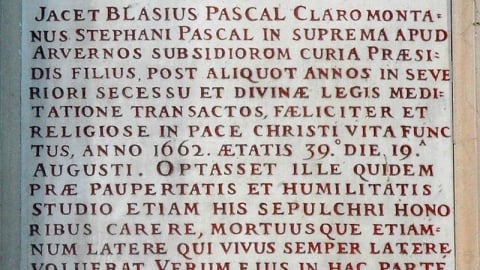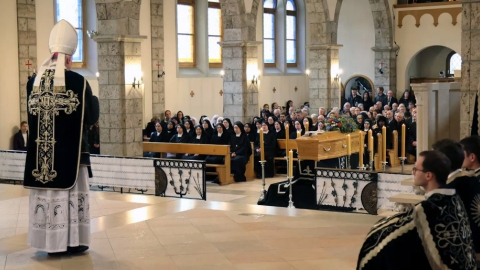A Magisterium With Flexible Geometry
The Post-Synodal Exhortation Querida Amazonia, “Beloved Amazon,” published by Pope Francis on February 12, 2020, was received in various ways. It sparked the wrath of the progressive camp and the relief of the conservatives. But above all, it is the subject of a great variety of interpretations, so that one wonders if all have read the same text correctly. This disparity is the sign of a magisterium with flexible geometry, which varies according to the circumstances.
The Ordination of Viri Probati
One of the main concerns was the ordination of married men, the viri probati. Some, like Cardinal Gerhard Müller or Archbishop Athanasius Schneider, rejoice that the Pope has rejected the Synod’s suggestion to ordain as priests married deacons after a suitable formation (cf. Final Document of the Synod, no. 111).
Others, conversely, do not hide their annoyance, such as Cardinal Claudio Hummes, general rapporteur of the Synod for the Amazon, absent during the presentation of the papal text. He demands that the theme be taken up in Rome, in accordance with the requests of the synod.
Finally, many observers note that the subject of No. 111 is not even addressed by the exhortation, but that it is treated by omission. And that’s what is disturbing. It is this silence that allows interpretive leeway. The most savvy see it as a skillful maneuver: the pope does not want to directly engage of himself—what’s more, he has affirmed that he would not do so—but he does not exclude an advance by others means.
The Status of the Final Synod Document
Another important question is that of the legal or canonical status of the Final Document of the Synod. The Pope affirms in fact: “I will not go into all of the issues treated at length in the final document. Nor do I claim to replace that text or to duplicate it… I would like to officially present the Final Document, which sets forth the conclusions of the Synod… I have preferred not to cite the Final Document in this Exhortation, because I would encourage everyone to read it in full… May the pastors, consecrated men and women and lay faithful of the Amazon region strive to apply it, and may it inspire in some way every person of good will” (nos. 2-4).
During the presentation of the Apostolic Exhortation on February 12, Cardinal Lorenzo Baldisseri clearly stated that it alone was part of the pontifical teaching, to the exclusion of the Final Document. And the director of the press office of the Holy See, Matteo Bruni specified that the Final Document “doesn’t become magisterium.” The exhortation acts as “the lens to read the final document of the synod,” he added.
But there are many who argue otherwise. Thus Cardinal Michael Czerny, in an interview on the same day, published on Vatican.news, recalls that “in the introduction to the Post-Synodal Apostolic Exhortation, the Pope explains that he does not want to replace or repeat that [final] document. He presents it officially…He asks that all pastors, consecrated persons, and lay faithful in the Amazon commit themselves to its application.”
Msgr. Victor Manuel Fernández, Archbishop of La Plata, known for having written Amoris laetitia, affirms in the February 17 columns of L'Osservatore Romano that “Beloved Amazon” is a text that completes the Final Document without annulling it, which is a novelty.
The Jesuit Antonio Spadaro, editor-in-chief at La Civiltà Cattolica, explains in the February 12 issue that “this is the first time that a document of such magisterial importance explicitly presents itself as a text that ‘accompanies’ another one, namely, the synod’s Final Document, The Amazon: New Paths for the Church and for an Integral Ecology.” He continues: “The exhortation therefore does not go beyond the Final Document, nor does it simply intend to give it its seal. Francis accepts it entirely and accompanies it, guiding its reception within the synodal journey, which is in progress and certainly cannot be said to be concluded.”
A Very Plausible Hypothesis
Monsignor Nicolas Bux, priest of the diocese of Bari and a conservative close to Benedict XVI, wonders: “If, as Cardinal Baldisseri has stated, this document does not fall under the Magisterium, but has a simple moral value, it remains to be seen how it can nonetheless assume the authority of being the interpretive key to the Exhortation, such that the latter must be interpreted in the light of this Document, which Francis has invited us to read and keep it entirely in mind (Benedict and Me, February 20, 2020).
Fr. Raymond J. de Souza, in the February 12 edition of the National Catholic Register, recalled that the apostolic constitution Episcopalis communio of September 15, 2018 gave the synod of bishops new regulations. It stipulates: “if it is expressly approved by the Roman Pontiff, the final document [of the synod] participates in the ordinary magisterium of the Successor of Peter” (Article 18). In other words, the pope makes it his own.
The question then is to find out whether or not the Pope has expressly approved the Final Document of the Synod. Considering the text of “Beloved Amazon,” it is possible to support both positions.
Those who answer in the negative will say that the approval is not “express” or explicit. For this, there is a lack of terms such as “approve,” “declare,” or “promulgate,” which are commonly used on such occasions.
Those who support the opposite can rightly claim that an “official presentation” can be understood as an endorsement. Indeed, the text of the Exhortation is very explicit: the pope calls for the full application of the final document—which is why he refuses to summarize it—and states that his exhortation does not replace it. It is for this that a post-synodal exhortation is normally intended.
Doubtless, the simplest way would probably be to ask the pope what he meant to say. But he will not give an answer, because he is waiting for relevant bishops’ conferences to act—the principle of decentralization of authority, under the name of synodality, must come into play here. It is up to the bishops to do the work. The pope said he would not abolish priestly celibacy, but he did not say he would not let the Amazon conferences ordain the viri probati. Quite the opposite.
The Pope wants a Church with flexible geometry, so that it can adapt to the peripheries, according to their own needs. If the Church with an “Amazon face” demands the sacrifice of celibacy, he will not oppose it. Such is the message contained in this approval of the Final Document by the “Beloved Amazon” Exhortation. Waiting for the Amazonian face to extend to other parts of the Church, beginning with the banks of the Rhine.
(Source - Vatican.news/National Catholic Register/La Civiltà Cattolica/InfoCatholica/Benoît et moi - FSSPX.Actualités - 06/03/2020)





